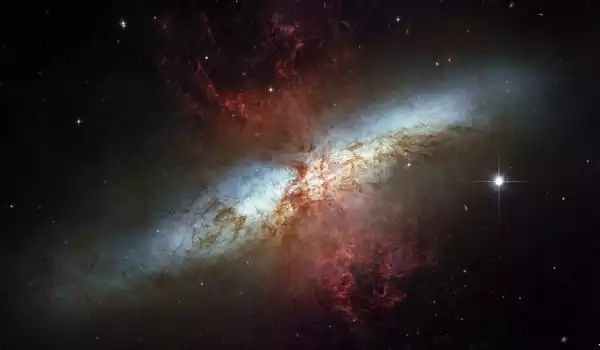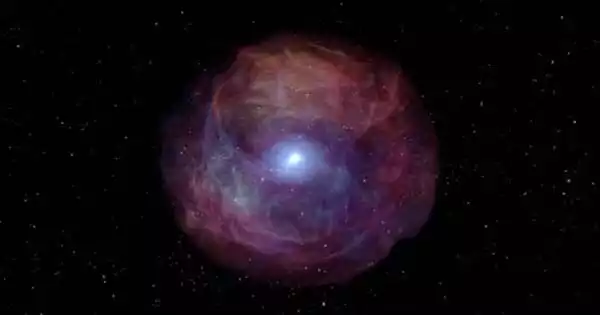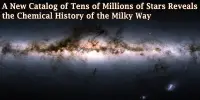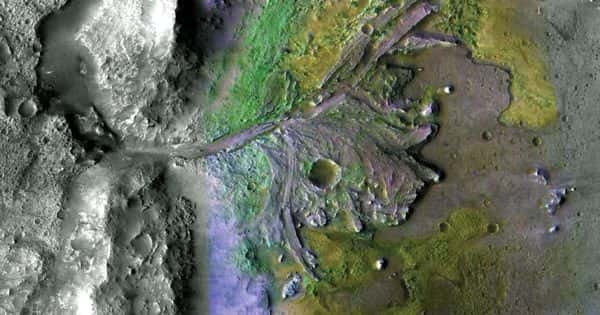The universe encompasses all of space and time, as well as its contents, which include planets, stars, galaxies, and all other forms of matter and energy. The Big Bang Theory is the most widely accepted cosmological explanation for the evolution of the universe. According to this theory, space and time coexisted 13.787±0.020 billion years ago and have been expanding ever since. While the spatial size of the entire universe is unknown, the cosmic inflation equation indicates that it must have a minimum diameter of 23 trillion light-years, and the size of the observable universe, which is approximately 93 billion light-years in diameter at the present time, can be measured.
Astronomers have discovered a possible clue to how the universe reionized after the Big Bang. The researchers discovered a million-times-brighter-than-our-sun black hole that may have been similar to the sources that powered the universe’s reionization.
A period known as “The Epoch of Reionization” began about 400,000 years after the universe was created. During this period, the previously hotter universe began to cool, and matter clumped together, forming the first stars and galaxies. As these stars and galaxies formed, their energy heated the surrounding environment, reionizing some of the universe’s remaining hydrogen.
We can’t see the sources that actually powered the universe’s reionization because they’re too far away. We examined a nearby galaxy that had properties similar to galaxies that formed in the early universe. One of the primary goals of the James Webb Space Telescope was to look for galaxies that housed the sources that powered the universe’s reionization.
Professor Phil Kaaret
The reionization of the universe is well known, but determining how it occurred has proven difficult. Astronomers have looked beyond our Milky Way galaxy for clues in order to learn more. In a new study, astronomers from the University of Iowa discovered a source in a group of galaxies known as Lyman continuum galaxies, which may hold information about how the universe was reionized.
The Iowa astronomers discovered a black hole a million times brighter than our sun in the study, which may have been similar to the sources that powered the universe’s reionization. According to observations made in February 2021 with NASA’s flagship Chandra X-ray observatory, that black hole is powerful enough to punch channels in its respective galaxy, allowing ultraviolet photons to escape and be observed.

“The implication is that outflows from black holes may be important in allowing ultraviolet radiation from galaxies that reionized the intergalactic medium to escape,” says Phil Kaaret, professor and chair of the Department of Physics and Astronomy and the study’s corresponding author.
“We can’t see the sources that actually powered the universe’s reionization because they’re too far away,” says Kaaret. “We examined a nearby galaxy that had properties similar to galaxies that formed in the early universe. One of the primary goals of the James Webb Space Telescope was to look for galaxies that housed the sources that powered the universe’s reionization.”
There are many competing hypotheses about the ultimate fate of the universe and what, if anything, preceded the Big Bang, while other physicists and philosophers refuse to speculate, believing that prior states will never be accessible. Some physicists have proposed various multiverse hypotheses in which our universe could be one of many other universes that also exist.
Because the energy of a photon decreases with its wavelength, the energy density of electromagnetic radiation decreases faster than that of matter as the universe expands. Around 47,000 years ago, matter’s energy density surpassed that of photons and neutrinos, and it began to dominate the universe’s large-scale behavior. This marked the end of the radiation-dominated era and the start of the matter-dominated era.
At astronomical length scales, gravitation is the most powerful of the four fundamental interactions. Gravity’s effects are cumulative; by contrast, the effects of positive and negative charges tend to cancel each other out, rendering electromagnetism insignificant on astronomical length scales. The remaining two interactions, the weak and strong nuclear forces, decay very quickly with distance; their effects are primarily confined to subatomic length scales.
The universe appears to contain far more matter than antimatter, an asymmetry that may be related to the CP violation. This imbalance between matter and antimatter is partially responsible for the existence of all matter today, because matter and antimatter would have completely annihilated each other during the Big Bang, leaving only photons as a result of their interaction. The universe also appears to have no net momentum or angular momentum, which would be consistent with accepted physical laws if the universe were finite. Gauss’ law and the non-divergence of the stress-energy-momentum pseudotensor are examples of these laws.
















